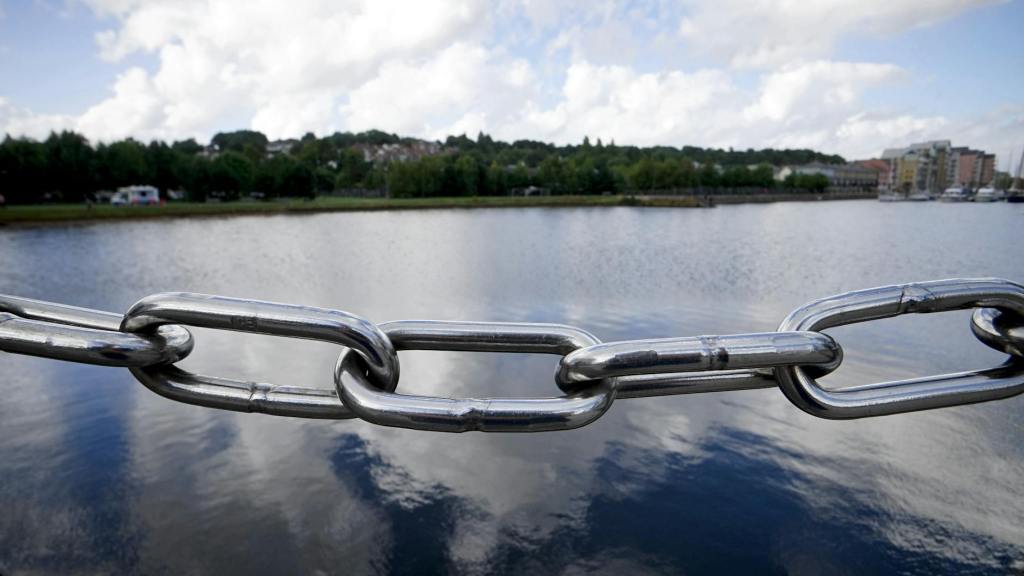Certainly! Let’s delve into the world of backlinks in the context of SEO.
A backlink, also known as an inbound link or incoming link, is a hyperlink created when one website links to another. These links play a crucial role in Search Engine Optimization (SEO). Here are the key points about backlinks:
- Purpose of Backlinks:
- Discovery by Searchers: Backlinks allow internet users to navigate from one place to another on the web. When someone encounters a backlink and clicks on it, they can explore related content. For instance, imagine a page about hedgehogs linking to a hedgehog mapping site. Visitors who follow that link might become fans, subscribers, and sharers of the linked content.
- Website Authority and Credibility: Search engines view backlinks as votes of confidence. Each backlink signals that the linked content is valuable, credible, and useful.
- Why Backlinks Matter:
- Discovery: Backlinks help people discover relevant content as they move around the web.
- Website Authority: Search engines consider backlinks when ranking pages. The more quality backlinks a site has, the better its chances of being discovered and ranked higher.
Remember, backlinks are like interconnected pathways on the internet, guiding users from one corner of the web to another! 🌐🔗
How can I build high-quality backlinks?
Certainly! Building high-quality backlinks is essential for improving your website’s authority and search engine rankings. Here are some effective strategies:
- Become a Source For Reporters and Bloggers:
- Use Help a Reporter Out (HARO) to connect with journalists and bloggers seeking sources.
- Register as a source, choose a plan, and contribute valuable insights to relevant queries.
- HARO can help you secure white hat backlinks from authoritative news sites and blogs.
- Publish “Skyscraper” Content:
- Identify existing content in your industry that has performed well in terms of backlinks.
- Create a piece of content that surpasses the quality of what you found.
- Make it 5-10 times better by adding depth, original research, multimedia, and comprehensive information.
- Promote your content to relevant audiences and encourage them to link to it.
- Build Links From Outdated Resources:
- Find outdated or broken content related to your niche.
- Create updated, improved versions of that content.
- Reach out to websites linking to the outdated resource and suggest they update their links to your fresh content.
- Use Content Formats Proven To Generate Links:
- Certain content formats tend to attract more backlinks:
Infographics: Visual representations of data or concepts.
Original Research: Conduct surveys, studies, or experiments and share the results.
Comprehensive Guides: In-depth resources that cover a specific topic thoroughly.
Listicles: Curated lists of valuable resources or tools.
Case Studies: Real-world examples of success or failure.
- Create content in these formats to increase your chances of earning quality backlinks.
- Publish Ultimate Guides:
- Comprehensive guides that cover a topic comprehensively tend to attract backlinks.
- Invest time and effort in creating detailed, well-researched guides that provide immense value to your audience.
- Use Branded Strategies and Techniques:
- Develop unique strategies or techniques related to your industry.
- Share them through content, presentations, or workshops.
- When others find value in your approach, they’ll naturally link to it.
- Authority Resource Pages:
- Identify websites or blogs that maintain resource pages related to your niche.
- Reach out to them and suggest adding your content as a valuable resource.
- These pages often link to high-quality content.
Remember, building backlinks takes effort and persistence. Focus on quality over quantity, and always prioritize white hat practices. Happy link building! 🌐🔗

What are some common link-building mistakes to avoid?
Certainly! When it comes to link-building, avoiding mistakes is crucial for a successful SEO strategy. Let’s explore some common pitfalls and how to steer clear of them:
- Buying Links:
- Purchasing links can harm your blog’s search engine rankings.
- Search engine algorithms are getting smarter at detecting paid links.
- Avoid buying links from questionable sources.
- Instead, focus on natural link acquisition through valuable content.
- Ignoring Toxic Links:
- Google’s Penguin update penalizes sites with toxic backlinks.
- Use tools like Semrush to analyze your backlinks.
- Remove or disavow toxic links using Google’s Disavow tool.
- Prioritizing Quantity Over Quality:
- More links don’t always mean better rankings.
- Focus on high-quality, relevant backlinks.
- Aim for authoritative sites in your niche.
- Using Irrelevant Anchor Texts:
- Anchor texts should be relevant to the linked content.
- Avoid generic or unrelated anchor text.
- Opt for descriptive and contextually appropriate phrases.
- Linking from Low-Authority Websites:
- Backlinks from low-quality sites can harm your credibility.
- Prioritize links from authoritative and reputable sources.
- Relying Solely on Automated Link Building:
- Automation can lead to spammy links.
- Build relationships and earn links organically.
- Not Diversifying Anchor Texts:
- Overusing exact-match anchor texts can raise red flags.
- Mix up your anchor text variations for a natural profile.
Remember, quality over quantity is the key to effective link-building. Stay informed, adapt to changes, and build a strong backlink profile! 🌐🔗
How can I track my backlinks and monitor their quality?
Certainly! Keeping an eye on your backlinks and assessing their quality is crucial for maintaining a strong SEO strategy. Here are some effective ways to track and monitor your backlinks:
- Ahrefs Backlink Checker:
- Ahrefs offers a powerful Backlink Checker tool that provides detailed insights into your backlink profile.
- It allows you to:
View the number of referring domains and backlinks.
Check the Domain Rating (DR), which indicates the strength of backlink popularity.
Monitor the growth or decline of your backlink profiles over time.
Explore the complete breakdown of your backlink profile, including link types (dofollow/nofollow), platform, and more.
Estimate organic traffic to each linking page and referring domain.
Identify broken outbound links and analyze anchor texts.
- Ahrefs’ real-time data updates ensure accuracy and reliability1.
- BacklinkManager:
- BacklinkManager is another tool that provides real-time notifications and comprehensive analysis of your backlinks.
- Regularly check for broken links on your website to maintain a healthy backlink profile.
- Monitor your competitors’ backlinks using specialized SEO tools like Ahrefs, SEMrush, or Moz.
- Utilize feature breakdowns in monitoring tools to gain deeper insights into your backlink health2.
- Other Tools:
Moz, SEMrush, and Majestic are also popular tools for monitoring backlinks. These tools help you detect new and lost backlinks, analyze anchor texts, and assess overall link quality. Each tool has unique features, so explore and choose the one that best suits your needs.
Remember, quality matters more than quantity when it comes to backlinks. Regularly monitor your backlink profile, disavow harmful links, and focus on building high-value, relevant connections! 🌐🔗
Here is More about guest posting strategies.
Certainly! Guest posting can be an effective strategy to enhance your online presence, build authority, and attract targeted traffic. Here are some steps to create a successful guest blogging campaign:
- Find Guest Post Targets:
- Start by identifying websites that accept guest posts. You can use various techniques to discover these opportunities:
Google Search Strings: Use search strings like:
Your Keyword “guest post”
Your Keyword “write for us”
Your Keyword “guest article”
Google Reverse Image Search: Find prolific guest bloggers in your niche and explore the sites they contribute to. Learn from their choices and identify potential platforms1.
- Get Your Guest Post Ready:
- Craft a high-quality guest post that aligns with the target site’s audience and guidelines.
- Focus on providing value, actionable insights, and well-researched content.
- Include a compelling bio with relevant self-promotion links back to your website or other resources2.
Remember, guest blogging is not just about backlinks; it’s an opportunity to showcase your expertise and connect with a wider audience. Define clear goals, choose the right platforms, and create valuable content to maximize the benefits of guest posting! 😊
How can I recover from a Google penalty due to bad backlinks?
Recovering from a Google penalty can be challenging, but with the right approach, you can regain your site’s rankings. Let’s break down the steps for effective Google penalty recovery:
- Identify the Type of Penalty:
- Determine whether you were hit by a manual penalty or an algorithmic penalty:
Manual Penalty: Given by Google employees after reviewing your website. Common reasons include unnatural links, spammy content, manipulative structured markup, or cloaked images and redirects. Google notifies you through Google Search Console.
Algorithmic Penalty: Triggered by the Google search algorithm (not a human). Two common algorithmic penalties are:
Google Panda: Targets content-related issues, such as low-value pages or excessive ads compared to content.
Google Penguin: Aims at websites using low-quality or dodgy links to boost rankings. Focus on building high-quality links or using reputable link-building services1.
- Examine Potential Ranking Issues:
- Investigate any issues affecting your rankings. Look for technical, content-related, or structural problems that might have contributed to the penalty.
- Review Recent Algorithm Updates:
- Check if your site was impacted by recent algorithm changes (such as Google’s core updates). Understanding these updates can guide your recovery efforts.
- Run a Complete SEO Audit:
- Conduct a thorough audit of your site:
Technical SEO: Check for crawl errors, broken links, and other technical issues.
On-Page SEO: Evaluate content quality, keyword usage, and user experience.
Backlink Profile: Assess the quality of your backlinks.
User Experience: Ensure your site is user-friendly and mobile-responsive.
- Clean Up Your Backlink Profile:
- Identify and remove harmful or spammy backlinks. Use tools like Monitor Backlinks or Surfer SEO to assist in this process.
- Disavow toxic links through Google’s Disavow Tool if necessary.
- Request a Review in Google Search Console:
- After addressing the issues, submit a reconsideration request through Google Search Console. Explain the actions you’ve taken to rectify the problems.
- Monitor Your Site’s Performance:
- Keep a close eye on your rankings, traffic, and other performance metrics. Be patient; recovery may take time.
Remember, persistence and adherence to best practices are key to successful Google penalty recovery. Focus on quality content, user experience, and ethical SEO practices to regain your site’s authority and rankings! 😊

What’s the role of social media in link-building?
Social media plays a pivotal role in modern link-building strategies, offering a multitude of benefits for enhancing SEO and brand visibility. Let’s delve into how social media contributes to effective link-building:
- Content Promotion:
- Social media platforms can significantly increase the visibility of your content and website.
- When you share your blog posts, articles, or other valuable content on platforms like Twitter, LinkedIn, or Facebook, you expose it to a broader audience.
- If your content resonates with users, they may share it, leading to more exposure and potential backlinks1.
- Relationship-Building:
- Social media allows you to connect with other websites and their owners.
- By engaging in conversations, sharing insights, and collaborating, you build relationships within your industry.
- These relationships can lead to organic backlinks as others recognize your expertise and value your content1.
- Outreach:
- Social media provides a platform for outreach efforts.
- You can actively seek out opportunities for guest posting, collaborations, or partnerships.
- Engage with influencers, bloggers, and industry leaders to explore link-building possibilities2.
Remember, while social media links themselves may not directly impact your SEO ranking, their indirect effects on content visibility, relationships, and outreach can significantly contribute to your overall link-building success! 😊
Tell me about local SEO and link-building.
Certainly! Local SEO and link-building are essential components for businesses aiming to thrive in their local markets. Let’s explore their significance and effective strategies:
- Local SEO Link Building:
- Local SEO link building focuses on acquiring backlinks from trusted local sources. These links significantly boost your prominence in Google’s local rankings.
- Why is it vital?
Over 90% of searchers choose businesses from the first page of local search results. Being prominently featured ensures visibility.
Local link building enhances your site’s authority within its niche and fosters connections with your community.
It’s a strategic, long-term effort leading to sustained search engine visibility1.
- Effective Tactics for Local Link Building:
- Analyze Competitor Backlinks:
Identify where your competitors are getting their backlinks. Tools like Ahrefs can help.
Reach out to similar local sources to secure relevant backlinks.
- Create Locally Relevant Content:
Craft content that resonates with your local audience. Highlight local events, news, or community stories.
Share this content on social media and local forums to attract backlinks.
- Leverage Local Directories:
Submit your business to local directories, chambers of commerce, and industry-specific listings.
Ensure consistent NAP (Name, Address, Phone) information across all platforms.
- Engage with Your Community:
Participate in local events, sponsorships, or charity initiatives.
Collaborate with other local businesses and organizations.
Engage on social media and build relationships with influencers and community members2.
Remember, local SEO link building isn’t just about rankings; it’s about becoming an integral part of your local ecosystem and serving your community effectively! 😊
How can I disavow toxic backlinks?
Disavowing toxic backlinks is a crucial step in maintaining a healthy website and improving your SEO. Here’s how you can do it:
- Assess the Situation:
- Manual Action: If you’ve received a manual penalty from Google due to unnatural or harmful links, disavowing is essential.
- Toxic Backlinks: Disavow backlinks only if you have a significant number of spammy, artificial, or low-quality links pointing to your site, and they have caused or are likely to cause a manual action1.
- Create a List of Links to Disavow:
- Assemble a list of pages or domains that you want to disavow.
- Format the list in a text file (UTF-8 or 7-bit ASCII) with one URL or domain per line.
- To disavow a domain, prefix it with “domain:” (e.g., domain:example.com).
- Maximum URL length is 2,048 characters, and the file size should not exceed 2MB1.
- You can include comments by starting a line with a # mark. Google will ignore these lines.
Example:
# Two pages to disavow
[^2^][4](http://spam.example.com/stuff/comments.html)
[^3^][5](http://spam.example.com/stuff/paid-links.html)
# One domain to disavow
domain:shadyseo.com
- Upload Your List:
- Post the disavow list in Google Search Console for each property you own.
- Uploading a new list will replace any existing one for that property1.
Remember, disavowing should be done cautiously. Regularly monitor your backlink profile and continue building high-quality, relevant links to improve your site’s overall health! 😊
What’s the impact of nofollow links on SEO?
A nofollow link is like a signpost for search engines, telling them to pay no attention to a certain path. It’s a small piece of HTML code on your webpage that says, “Hey Google, don’t give any credit to this link! We’re not endorsing that page.” While nofollow links do not directly contribute to search engine rankings, they play a significant role in diversifying your link profile and driving traffic to your site.
Here’s how they work:
- Nofollow Link Definition: Imagine your website as a city, with pages as different buildings and links between them as roads. Nofollow is like a “no entry” sign for search engine traffic. When you add the rel=”nofollow” attribute to a hyperlink in the HTML code, you’re effectively telling search engine crawlers not to follow that road, not to pass any “vehicles” down it. In simpler terms, a nofollow link doesn’t pass any link equity or PageRank to the linked page—essentially ignoring it from a search engine’s perspective.
- Purpose and Origin: Google introduced the nofollow tag to combat spammy links in blog comments and prevent shady websites from gaining unfair advantages in search results. Essentially, this tag helps keep your website clean and protected from potential negative SEO tactics.
- Indirect Impact: Although nofollow links don’t directly influence search rankings, they can still bring valuable traffic to your site by guiding human visitors. For instance:
- You provide insightful comments on a popular blog post and include a nofollow link to your website. While it may not carry direct SEO value, someone might click on your link and explore your site.
- Search engines like Google may use anchor text from nofollow links to understand context and relevance when crawling websites.
- Strategic Use: Utilize nofollow links within your overall link-building strategy to enhance the credibility and authority of your website. They contribute indirectly to your site’s visibility and authority.
Remember, adding a nofollow attribute to a link is critical for SEO. In HTML, it’s as simple as including rel=”nofollow” within the anchor tag:
<a href=”https://www.example.com” rel=”nofollow”>Link Text</a>
So, while nofollow links don’t directly boost rankings, they shouldn’t be discounted completely—they play a valuable role in your website’s overall health and traffic.
Have Some More about link-building outreach strategies.
Certainly! Link-building outreach is a crucial aspect of search engine optimization (SEO). It involves reaching out to other websites, bloggers, or influencers to acquire high-quality backlinks. Here are some effective strategies for successful link-building outreach:
- Content-Driven Link Building:
- Create high-quality content that naturally attracts links from other sites. When your content provides value, other websites are more likely to link to it.
- Consider creating infographics, research studies, comprehensive guides, or unique blog posts that stand out in your niche.
- Guest Posting:
- Write guest posts for relevant blogs or websites in your industry.
- Ensure that your guest post is well-researched, informative, and adds value to the target audience.
- In your guest post, include a relevant link back to your own website.
- Relationship Building:
- Nurture relationships with other website owners, bloggers, and influencers.
- Engage with them on social media, comment on their blog posts, and participate in relevant discussions.
- Building genuine relationships can lead to natural link opportunities.
- Influencer Outreach:
- Identify influencers in your niche and reach out to them.
- Offer to collaborate on content, interviews, or joint projects.
- When influencers mention your brand or content, they may naturally link to your website.
- Expert Roundups:
- Participate in expert roundups or collaborative articles.
- When bloggers compile insights from multiple experts, they often link back to the contributors’ websites.
- Share your expertise and get featured in these roundups.
- Podcast Outreach:
- Explore opportunities to be a guest on relevant podcasts.
- Podcast hosts often provide links to their guests’ websites in the show notes or episode descriptions.
Remember that successful link-building outreach requires careful planning and execution. Assess your current backlink profile, research potential link targets, craft engaging pitches, and use the right channels and tools for outreach.
More resources
- A Comprehensive Guide To Link Building Outreach Plan + Examples
- Link Building Outreach: The Beginner’s Guide To Link Building – Moz
- Link Building Outreach Guide: Effective Strategies for SEO
- An Ultimate Guide on Link Building Outreach Strategies For 2024?
- Link Building Strategies: The Complete List (2024)
- Nofollow vs. Follow Links: Everything You Need to Know
- What is a Nofollow Link – Definition, Impact, and Best Practices
- Understanding Nofollow Links: How They Affect SEO and Website Ranking – On-Page




Leave a comment